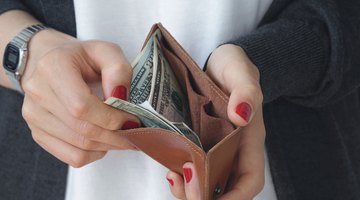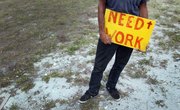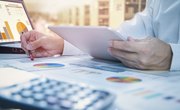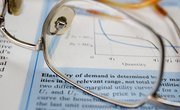While the word "economics" may conjure up a view of Wall Street trading or a college course, it is actually a term that relates to everyday life in many ways. Economics is a social science that deals with the life-cycle of goods and services. It is a study of how innovation and finance revolve around the basic human needs and wants in order to provide products and services to the public. Understanding how economics relates to society is critical to business success but also relates everyday life. Consumers confident in the economy are more likely to spend while a shaky economy may be matched with consumers less willing to spend money. Taking a closer look at supply and cost, consumer loans, consumer confidence and debt and spending helps analyze the overall economic climate and outlook.
Supply and Cost
Economics has an enormous effect on the daily lives and wallets of all people, even if they aren't actually involved in economic studies. The principles of supply and demand play out every day for people making purchasing decisions on goods and services as well as in them keeping or finding employment. Changes in circumstances, regulations or government mandates on any part of an industry's economic structure can create a ripple effect of price changes through multiple industries to the end consumer. For example, if regulations change distribution channels, that can increase the cost of producing goods which in turn, forces retailers to raise the price of goods to still have an economic profit.
Consumer Confidence
When the consumers' confidence in the economy is low, they restrain spending, starting with dining out and going to the movies. These industries have wage workers that lose income when hours are cut due to reduced business. Soon, everyone feels the pinch perpetuated by fewer open retail check-out lines to fewer police on the streets. The Gallup Consumer Confidence poll measures ongoing consumer economic confidence by asking Americans to answer questions on their view of current economic conditions and if they think conditions are improving or declining from a point in the recent past.
Debt and Spending
CNN Money reports that consumer spending fuels two-thirds of the United States economic activity, much of which was based on credit prior to 2008. The 2008 to 2009 financial collapse led banks to tighten consumer lending, and consumers began paying down debt rather then spending as usual. Reducing personal debt is good on the individual level, but this reaction also kept employment in a slump and reduced the disposable income of households and individuals. When individuals see the economy as being stronger, they are more apt to spend money in stores and on larger purchases like homes or vehicles. Debt often comes with those purchases beyond day-to-day spending. When consumers return to feeling the economy is rebounding, they are apt to take on more debt with less fear of an economic collapse.
Related Articles
References
- CNNMoney: Consumer Confidence Ticks up in October (2010)
- RasmussenReports: Discover ® Consumer Spending Monitor (SM) Rises 1.8 Points in October
- BusinessInsider: The New American Consumer is Terrified of Debt Even as the Economy Grows
- Economics Help: Applying Economics in Everyday Life
- Gallup: U.S. Economic Confidence Index
Writer Bio
Cynthia Clark began writing professionally in 2004. Her work experience includes all areas of small-business development, real-estate investments, home remodeling and Web development. Clark is skilled in a number of design disciplines from digital graphics to interior design. Her diverse background and commonsense problem-solving skills allow her to tackle a variety of topics as an online writer.











